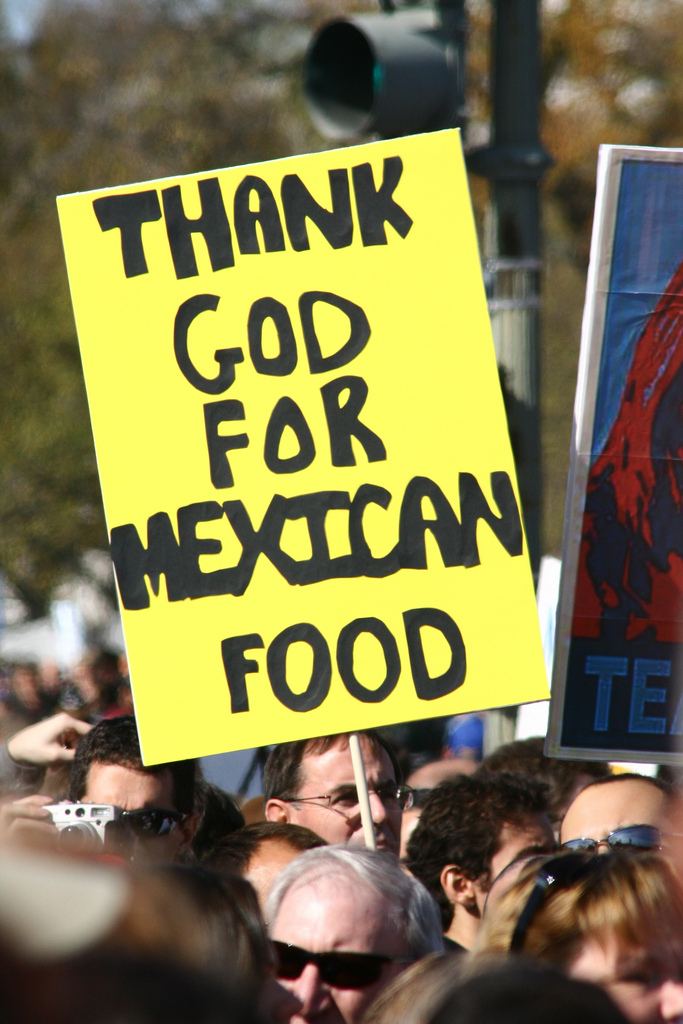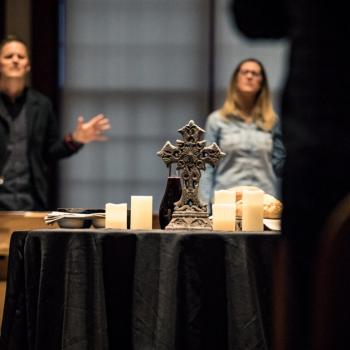Getting along is hard to do. People divide. That’s a fact of human nature. Division occurs when two divergent views emerge within seeming mutuality. Best friends quickly become enemies. Teammates become opponents. Royal siblings go to war over an inherited kingdom. A Church becomes churches? Well, that is the question at hand. In which way does early Christianity during the late first, second, and third centuries CE emerge and why does it become quite diverse? This essay will seek to explore two major factors influencing the emergence of early Christianity, specifically by addressing: the diverse leadership contexts of early Jesus movements and (dis)continuity with Hebraic thought. These are in no way the only reasons, but give us two categories to start further dialogue and exploration of the diversity of early Christianity, from the time of the Apostles to the early 300s.
Diverse Contexts for Leadership Structures in Early Jesus Movements
It’s not hard to imagine that diverging views of Christianity formed in the Roman Empire partly resulting from limited leadership structures and contextual diversity. In the beginning no “canonized” structure was adopted by the early church. Through New Testament documents, particularly those attributed to Saint Paul, we see an evolutionary process of leadership structuring—often contextualized for specific locales. For instance, in Paul’s undisputed letters[1] no static leadership structure immediately presents itself. In these letters we don’t find, for instance, the term “presbyter” (elder or priest) anywhere. However, it could be argued that Paul does mention some paralleling functions of leadership such as laborers (1 Thess. 5.12) or the household leadership of Stephanas (1 Cor. 16).[2]
Robert Grant states “that in early times the terminology of Christian office was highly fluid… [which suggests] that the functions of leadership, primary and secondary, existed but had not yet been crystallized.”[3] He goes on to add the helpful insight that many of these leadership vocations are adaptations from the Judaism of the time. It should be noted, here, that Paul does mention bishops in his letter to the Philippians. This term, which literally means “overseer” would eventually denote those in charge of leading one or more Jesus communities—a leader of the presbyters and deacons. But even here, we aren’t given a sense that the official “offices” have been universally recognized and established. The functions are present in many settings, to be sure, but not in the sense that the word carries today within established high church structures like the Catholic, Anglican, or Orthodox churches. Likely leaders were appointed by the Apostles—but the specifics of this depend some on legend.[4]
By the time of the Pastoral letters (disputed letters of Paul usually dated toward the latter part of the first or early second century) an emphasis on leadership structure and succession presents itself. Yet even here, it isn’t clear that the “global” church is unified in some larger governing body. The succession is more than likely regional, with various regions representing an apostolic “school.” This is one of many possibilities for why the Pastoral letters to Timothy and Titus bear the name “Paul” even though these might not actually have been written by him. One theory, amongst many, could be that Paul’s “authority” was handed down to those in his school, and so forth, so they admirably wrote in his name after his death. But even then, it doesn’t seem that a united “orthodox” church existed with a governing body and theology. A move in that direction continues with the authorship of 1 Clement which was circulated widely at the beginning of the second century CE. Even here where bishops, presbyters, and deacons are mentioned, their roles don’t seem completely settled.
In 100 CE, we see no standardized buildings called “churches” and no standardized (especially in a broad sense) leadership structures, although they were emerging. When 300 CE came around, many house churches had given way to church buildings. At this time the office of bishop was universally recognized in the “orthodox” streams of Christianity. This demonstrates that the early Jesus movement represented localized movements that eventually diverge into dominant streams. One reason for the diversity of the church, during the period after the Apostles up until its legalization and adoption by the Roman Empire in the 300’s, is simply that the organizational structures were at least partially organic in nature. Different leaders addressed different locales with varying emphasizes based on the cultural dynamics present in each church.
Early Jesus Movements are Like Mexican Food
To illustrate how organizational structures and contextual realities affect uniformity and/or diversity, consider the general differences between a local Mexican food restaurant versus Taco Bell. As a native Californian I grew up enjoying the beautiful culture and the tasty food of our neighbors to the south in Baja. Although many Mexican restaurants have similar items, each independent restaurant has its own unique flavor. Some places use refried beans while some cook with black. One restaurant is located on a street corner in a food truck, the other a fine dining experience. Some dining establishments offer free salsa and chips, while others require payment for this holy sacrament of Mexican specialty items. Each restaurant reflects the leadership culture of the establishment (often a family business), which easily lends itself to a unique experience—even though most Mexican restaurants offer flavors of a similar pallet.
Compare this to Taco Bell—the not-so-Mexican food chain. Besides the diversity, perhaps, of regional promotions and the occasional specialty item, a person goes to Taco Bell in California for the same reason they do in Maine—to sink their teeth in the cheap, consistent flavors of a Taco Supreme. Either the large corporate chain or the small local taco shop has the potential to adapt its products into something that can no longer be called “Mexican” with integrity—that is when the food no longer finds continuity with its founding narrative. Thus, some people would call Taco Bell “American food.”
Instead of localized Mexican food expressions or uniform Taco Bell, consider a third option. Imagine that the localized restaurants decide to form an extended network called the Authentic Mexican Food Association. When you go to one of their restaurants—although contextually specific variances should be expected—you know that the substance of the food will be the same. The food will be authentic to the shared historical Mexican cultural narrative.
Keeping in mind that all metaphors break down at some point, this is what we find as the early Jesus movements increasingly begin to organize—although diversity is to be expected to a point, the groups representing a similar continuity to the Jewish roots of the Jesus story increasingly associated. In doing so, divergent groups became obviously outside of the fold. Just as Taco Bell wouldn’t fit the criteria for the Authentic Mexican Food Association, certain articulations of the Jesus story and certain communities embracing divergent theologies and practices didn’t fit the emerging association of churches in the Roman Empire. It is upon this point that we now elaborate a second reason for why diversity sprung up in the couple of centuries following Jesus and the apostles.
(Dis)Continuity with Hebraic Thought
Although it won’t be possible to expound all of the ways in which different Jesus movements attempted to make meaning out of an inherited Jewish past, we should look at a couple of themes that illustrate the diversity of the second and third centuries. Prior to this, however, we need to introduce an ugly word into the conversation: Gnosticism. This term has come under criticism in recent years as being a sort of catch all for everything inconsistent with “orthodoxy.” Michael Williams (a professor in early Christianity at the University of Washington), for instance, worries that “the constant repetition in modern studies of clichés… [about] what ‘the Gnostics’ believed about this or that, or what features characterized ‘the Gnostic religion,’ have created the impression of a generalized historical and social unity for which there is no evidence and against which there is much.”[5] He adds that “the texts in question are better understood as sources from a variety of new religious movements.”[6]
Williams doesn’t deny commonalities that exist between various non-canonical (not in the Bible) texts, but believes we need a nuanced approach for dealing with those often regarded as Gnostic rather than abusing a convenient catch all category dependent on caricaturing. Perhaps we might say that Gnosticism often is characterized more like a Taco Bell when these varied movements should be recognized as localized independent communities that may or may not have important commonalities.
At the risk of doing exactly what Williams criticizes, it seems helpful to at least name some unifying themes that set apart many of the non-“orthodox” documents. These views disqualified them from membership in the Authentic Mexican Food Association—so to speak. Utilizing the work of Marvin Meyer and Bart Ehrman, which he calls “commendably clear” regarding general trends that characterize the varied forms of Gnosticisms, N.T. Wright summarizes four general categories:
- “a deep and dark dualism… [where] space, time, and matter” are evil as well as the physicality of human beings;
- this world is the product of a misguided or evil lower creator god, but there exists a higher god who is pure (a demiurgical worldview);
- the goal is escapist in nature[7] in that “attaining deliverance from the material cosmos” is salvation, which can’t be experienced by worshipping the creator god; and
- salvation comes through secret knowledge called gnosis “through attaining knowledge about the true god, about the true origin of the wicked world, and… about one’s true identity” from “the pure upper spiritual world.”[8]
In the Hebraic worldview our world was created by a loving Creator as “very good.” Although corrupted by evil, the cosmos would one day yield a healed reality, “a new heavens and a new earth” (Isaiah 65). The narrative of the Hebrew Scriptures demonstrates a good God who remains utterly committed to the world of space, time, and matter. Although it could be argued that some of the “orthodox” theologians towed that line imperfectly with the integration of platonic thought into some theological reflections, clear lines of thematic continuity existed (even where they are radically reinterpreted around the person of Jesus.)
The question we must come to, then, is why does the divergence from mainstream Jewish thought[9] matter for explaining the diversity of early Christianity? One thing to consider is that many Jewish sects expected that God’s kingdom would come imminently to bring about the restorative justice of God for this cosmos and for God’s people. After disappointing failed messiahs prior to Jesus, and the failed Bar-Kochba revolt after Jesus in 135 CE, some Jewish communities began “to reread their own traditions in this upside-down way” (referring to a good god and the lower creator god).[10] In such a climate, Christians now have an end times expectation that what Jesus inaugurate in his death and resurrection would quickly bring about the final kingdom of God on earth. When this didn’t happen as quickly as some would have hoped, it’s easy to see how these Gnostic tendencies “originated out of the crisis of apocalyptic eschatology [end times] in Judaism and in early Christianity.”[11] The choices became clear: either settle down within this world or seek a way out of it.
“Gnostics,” although not willing to die for their beliefs (mostly because they believed that the “spiritual Christ was different from the Jesus about whom investigators inquired”[12]), sought escape through their life-long pursuit of connecting with the true spiritual world. Many of the “orthodox,” however, would embrace martyrdom since they put their hope in the eventual consummation of the kingdom of God and the resurrection of the body. Thus, how a community of Jesus followers understood this world in light of the inherited religio-cultural narrative of the Jews, had a major effect on diversity within early Christianity. Although two broad camps eventually presented themselves, there was much diversity within these groups of “new religious movements.”
Conclusion
Why couldn’t the early church get along? Well, although we didn’t look at the specific disputes that arose, we can see why they arose. When leadership structures differs from place to place clearly diverse expressions of Jesus movement will present themselves. When different groups are dealing with the fact that their end times hopes haven’t come to pass, how they adjust their vision of Christianity and its relationship with ancient Judaism will bring about diverse expressions of faith. Not all Mexican food is the same, even though it comes from the same roots. The same is true of early Christianity—it was diverse and evolving—just as it is today.
BIBLIOGRAPHY
Grant, Robert M. Augustus to Constantine: The Rise and Triumph of Christianity in the Roman World. Louisville: Westminster John Knox Press, 2004.
Michael Allen Williams. Rethinking “Gnosticism”: An Argument for Dismantling a Dubious Category. Princeton, N.J: Princeton University Press, 1996.
Wright, N.T. Judas and the Gospel of Jesus: Have We Missed the Truth about Christianity. Grand Rapids, Mich: Baker Books, 2006.
[1] I consider myself a bit agnostic concerning the so-called disputed letters of Paul. The arguments for and against have merit. The undisputed letters (meaning they were “for sure” written by him) include: Romans, 1 Corinthians, 2 Corinthians, Galatians, Philippians, 1 Thessalonians, and Philemon. The other letters attributed to Paul were probably attributed to him by a disciple in the “Pauline” school in the years after his execution. If they turn out to be specifically authored by Paul, then they would have a composition date prior to the mid-sixties CE.
[2]. Robert M. Grant, Augustus to Constantine: The Rise and Triumph of Christianity in the Roman World (Louisville: Westminster John Knox Press, 2004), 65.
[3]. Ibid., 66.
[4] This comment isn’t an outright disregard for “apostolic succession.” Iraneaus, for instance in the 180’s is clearly articulating that view—only a few generations after the Apostles. I’m simply pointing out that during the early Pauline days of Christian thought, they were not likely thinking specifically about formalized offices and procedures. These would take time to develop. Even as an Anabaptist I highly respect and see the importance (but not necessity for efficacy of the sacraments, etc.) of this succession. Clearly, most of the protestant reformers tried to secure for their emerging movements the apostolic lines, though they all failed (with the exception, if the theory is correct, of John Wesley [here]).
[5]. Michael Allen Williams, Rethinking “Gnosticism”: An Argument for Dismantling a Dubious Category (Princeton, N.J: Princeton University Press, 1996), 5.
[6]. Ibid.
[7] On this point about “escapism,” we should note that some scholars are a bit skeptical about the over-extension of this argument. See, for instance: Michael Williams’ “Life Full of Meaning and Purpose: Demiurgical Myths and Social Implications” (p. 19-15) in Beyond the Gnostic Gospels: Studies Building on the Work of Elaine Pagels Edited by Eduard Iricinschi, et al. (Tübingen, Germany: Mohr Siebeck, 2013) .
[8]. N.T. Wright, Judas and the Gospel of Jesus: Have We Missed the Truth about Christianity (Grand Rapids, Mich: Baker Books, 2006), 30–33.
[9] I am not under the impression that Judaism slightly before and after the time of Jesus is monolithic, however, it does have some broad themes like a good God who created a good world.
[10]. Wright, Judas and the Gospel of Jesus: Have We Missed the Truth about Christianity, 36–37.
[11]. Grant, Augustus to Constantine: The Rise and Triumph of Christianity in the Roman World, 120. It should be noted that the references to the failed Messiahs in Nag Hammadi and other “non-orthodox” documents are sparse—so this argument does require some nuance, which will not happen in a short essay like this one.
[12]. Ibid., 121.













